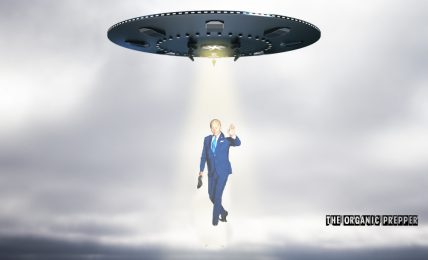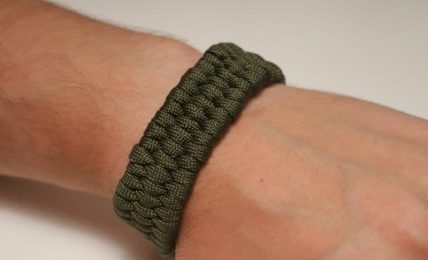Why do you enjoy putting Julianne Moore through hell? She seems nice. Seriously, though, what is it about her that has kept you returning to that working relationship for almost 30 years? penny_lane00
I could speak at length about the reasons why. It was remarkable, when we found each other on my second feature film, Safe, how fully formed she was, that early in her acting career. She had such a command of the medium and understood how much the camera picks up things that may not even be perceivable when you’re shooting. There have been things I don’t even see until I look at the dailies.
On top of all that, she’s interested in the kinds of stories and characters I’m interested in: vulnerable people who don’t know how to speak about who they are and what they want, or who are figuring it out and may never succeed through the course of the story.
In May December, her character and that of Natalie [Portman] are set up as people from very different worlds. One is an actor coming to study her subject – Julianne’s character, Gracie – for a film about what happened 25 years ago and made tabloid headlines. But you start drawing more and more comparisons between the two women through the course of the film. The way they both survive is in their persistent refusal to look at themselves.
Your work is very diverse. How do you decide which film to commit to? zebalby
I think [the German film-maker Rainer Werner] Fassbinder once said the best directors just make the same movie over and over again. People have definitely put my films into thematic through-lines: films that deal with domestic stories and female subjects in one category, and films that deal with artists and musicians in another. In both, I’m interested in places where identity is called into question by circumstances or by artistic practices.
But I think the thing that all directors share is that we don’t really see if it’s the same movie over and over: we’re trying something different each time in terms of genre, setting, language or historical moment. That’s why I guess it’s cool to hear somebody say my films are diverse.
Another interesting thing about my movies, which is not something I planned, is that they have very distinct audiences. A lot of people are like: “Velvet Goldmine is my movie,” or whatever, but they don’t really know my other movies. I dig it. It’s because all my films come from the margins, so they don’t necessarily go to the mainstream for their audiences.
Far from Heaven is my favourite of your films and one of the most beautiful colour films ever. (It was genius to have Elmer Bernstein write the score, by the way.) Did you use special filters to get that 1950s Universal International, Douglas Sirk look? Barrywerks
Far from Heaven was one of the last predigital films that we didn’t finish in a digital format. We did classic analogue colour timing, so everything you saw was done old school. There was no digital sweetening of anything: we used old cameras, we shot on film, we used intensely coloured gels on the lights. Then things just happened when we shot the fall scenes in New Jersey. The costume designer, Sandy Powell, had already designed all those clothes in fall foliage colours, and the real foliage matched the costumes in the most robust way you could imagine. I suppose that was just kismet.
How did you get the idea to cast Cate Blanchett as Jude Quinn in I’m Not There? Was it an “Aha!” moment, or did you think about casting a woman for that role from the beginning? RindyA
The concept was always a woman playing the role of Jude and it came out of a very specific idea. People mistakenly attribute the style of that particular story to Don’t Look Back, but it wasn’t – it was the Dylan who had plugged in electric, who was the subject of the footage DA Pennebaker shot on colour that became the experimental documentary Eat the Document.
Dylan had transformed so radically from 1965 to 1966 and had become so skinny and wiry; he was weirdly androgynous and bouncing around like a little marionette. Drugs, I’m sure, were involved. It was unlike any Dylan we’d seen before and yet it was in many ways the most famous Dylan, of Blonde on Blonde and Highway 61 Revisited. I wanted to infuse the Jude story with a sense of strangeness and shock and something uncanny – because he has become sort of canonised, the shock value has gone away. I wanted to do something extra to bring that out.
Which woman would play him was a whole other question. There was nobody else I was more seriously pursuing than Cate, even though some amazing female actors sent me tapes of themselves in the role. But I stalked her, really. She was scared: it was a big thing to take on, to play Dylan, especially that Dylan. But I knew it. And I just needed her to realise it, too, and she did. Every great actor I’ve worked with gets really scared at the beginning of a project. That’s why they’re as good as they are.
Could you share your memories of working with Heath Ledger on I’m Not There? Natalia
Heath was one of the most gifted and deep-thinking and feeling actors I’ve worked with. He was also an exquisitely accomplished director. He’d already directed rock videos and shorts, and each of them was completely distinct stylistically. Some were like musicals that he choreographed, like a [Bob] Fosse musical. Others were gritty, black-and-white, personal cinema, avant garde cinema. He was planning a feature film. When he came to Montreal for I’m Not There, unlike all the other actors who came and went because of their schedules, he stayed. He wanted to keep the creative environment we had. Then he and I spent a lot of time at the Venice film festival together, where the film premiered. I don’t know if we thought we were gonna get a prize, but we just hung out until the end.
I don’t think another film has hit me as hard as Safe. Julianne Moore’s performance as Carol is one of the greatest performances of all time and it is a brilliant and powerful film that resonates more with every passing year, unfortunately. What are your views on the ever-expanding “self-help” phenomenon and what would the Peter Dunning character be doing today? Bauhaus66
The core themes of Safe are about how we internalise the causes of our illnesses, and how willing we are to make ourselves culpable for our physical frailty, and the industry that has risen up around that. It’s almost like a free-market sensibility. It’s saying: you’re responsible for your own lot in life and your conditions. And it’s a way of excusing or dismissing cultural and social factors in the way we suffer. In that really cruel, but very human, way, we’re made to feel it’s a trick – you can make yourself better, if you love yourself enough. Or if you do these things, you can make yourself better, and therefore the burden to be better and to feel better is on you. While that seems to be empowering, it ultimately makes you subject to powers you can’t possibly change.
It came in mightily around the years of HIV and Aids. That’s what disturbed me, when writers such as Louise Hay would tell people with Aids what they told Carol: if you learn how to love yourself enough, you won’t get Aids. There’s a quote from a cancer survivor who says we humans would rather accept culpability than chaos. It’s like the little kid who says to their parents: “Why are you divorcing? It’s because of me, right?” It’s like: that’s how we make sense of things beyond our control.
Your documentary The Velvet Underground delves deep into the music and cultural landscape of the 1960s, capturing the essence of the band and the era. Could you share a specific moment or discovery during the making of the film that profoundly affected your understanding of the Velvet Underground’s legacy and its influence on the music industry? NenadGeorgievski
Part of the guiding concept of how to make that film was to draw on the avant garde cinema of the 60s in New York. How we would pay for it and how we would license the music, they were gonna be hard ones to solve. What was clear in the interviews that we conducted with the surviving people who were there was how the band was inseparable from that cinema – not just the art scene and the Andy Warhol visual happenings, but the cinema of that time, and how intrinsically they were embedded in it. John Cale lived with Jack Smith and did his soundtracks. They were a sort of a house band for Jonas Mekas’s expanded cinema series, before they became the Velvet Underground. Then, of course, we had this extraordinary cinema to share with younger audiences who may not know this stuff, and put it in this context with that music. Hopefully, it exposed you to that film, but also made you hear the music in a way that was fashionable and relevant.
I’m a huge fan. I would like the final version of what happened over Velvet Goldmine. As a Bowie fan, I think it’s hilarious and wonderful; I also think it’s very unfair to him. Holding both of those opinions is easy – I don’t know why people come down on it so hard. Liz1976
The fact that he didn’t want to give us his songs – we wanted seven – ultimately benefited the film so much. But what disappointed me was that he couldn’t see – the way Dylan was able to – the strategy. I was drawing from his own creations and internal dialogues, from face to face. And, yes, he did disavow his camp, queer period when he was doing Serious Moonlight, and then later he disavowed Serious Moonlight. He was in a constant debate with himself as an artist. And that’s what great artists should do.
It’s funny, because it’s always been in England that Velvet Goldmine gets it a little harder. People are very funny about it. But the thing that the film was running with is that glam rock shared the creative process with its fans in ways that I don’t think popular art had done to that degree before. You dressed up and you participated and you were in the dream of it yourself. The Rocky Horror Picture Show was a product of glam rock ethos completely and utterly – it’s the only movie in cinema history that created an entire ritual of reliving it, dressing up and repeating the lines. It was like you had to take part. That’s what Velvet Goldmine was trying to do – to make it into the fans’ fever dream of this time.
I can’t remember exactly what Bowie said, but it was something like, in a funny way: “Oh yes, I can see this is a gay film-maker’s take on that time.” I appreciate that. I’m like: dude, you started it. And I will be for ever grateful.


